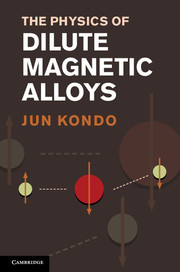7 - Wilson's theory
Published online by Cambridge University Press: 05 March 2013
Summary
Wilson (1975) introduced the following method, which is distinct from the perturbative calculation where an expansion in terms of J is used. In his method, one starts from a two-body system composed of a localized spin and a conduction electron located at the same point. One then proceeds to expand the system by gradually taking into account electrons that are in the nearest neighborhood. As one goes further away from the localized spin, the states that are far away from the Fermi surface are taken out of consideration. That is, when using this method, the states around the Fermi surface are described more and more precisely as the system grows larger in size, and this corresponds to lowering the temperature.
As the system grows larger, the number of basis states increases rapidly. However, consideration of around a thousand excited states near the ground state is sufficient, and therefore the size of the matrix that needs to be diagonalized remains small enough for numerical simulation on the computer. In this way, for a reasonable value of J, when the system size is increased in a series of about 100 steps, Wilson obtained a state which was considered to be at sufficiently low temperature.
- Type
- Chapter
- Information
- The Physics of Dilute Magnetic Alloys , pp. 144 - 164Publisher: Cambridge University PressPrint publication year: 2012



